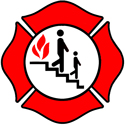
Las inspecciones de la ciudad de Cicero pueden se pedregosas y tardias dependiendo en la condición que se encuentre la casa que va a ser inspeccionada.
En la mayoria de los casos en la foto de abajo en la foto de abajo pueden ver lo que pudiera ser inspeccionado

Porque es obligatorio pasar esta inspección por el vendedor enforzada por la ciudad de Cicero ?
Basicamente la ciudad quiere estar segura de que la casa vendera con una seguridad para los residentes de esa casa , y que no habra problemas mayores como estos
- Evitar incendios
- Evitar Gasas contaminantes
- Evitar dobles departamentos sin estar legalizados
- Evitar que la casa se deteriore y no encaje con el entorno
- Evitar problemas Electricos graves
- Mas...
Las inspecciones pueden ser difíciles , pero necesarias para su propia seguridad y no hay que verlas como un mal , si no como beneficio.
Abajo consejos para preparar su casa para una inspeccion

- Prepare la casa para la inspeccion , con tiempo
- Revise la electricidad con profesionales y licencias activas
- Revise la casa en general con profesionales con licencias
- Utilice profesionales incluidos en las listas de Cicero , que han sido aprobados
- No repare nada usted mismo sin conocimiento
- Revise el exterior de la casa , pintura ventanas , y pavimento
- Garage
- Mold
- Lead (fijese en esto porque cicero hay muchas casas antiguas)
- ETC...
Para Saber con más profundidad los permisos que necesitan , click aqui para permisos
una Pre'inspeccion realizada por usted y la previa reparación y mantenimiento pudiera ahorrar malos mayores despues
Para mas dudas por favor pongase en contacto con la Ciudad de Cicero , Este web page no es parte de la la ciudad de Cicero , pero es informativa de Bienes Raices en Cicero y relativos .
Direccion del ayuntamiento de cicero y telefonos
4949 W. Cermak Rd.
Cicero, IL 60804
(p) 708-656-8223
(f) 708-656-8342
LEAD and MOLD
Did you know...
What is it?
Lead is a toxic metal used in a variety of products and materials. When lead is absorbed into the body, it can cause damage to the brain and other vital organs. Some symptoms of lead poisoning include:Lead can also harm children without causing any symptoms.
Both inside and outside the home, deteriorated lead-based paint releases its lead, which then mixes with household dust and soil. Children can become lead poisoned by putting their hands or other lead-contaminated objects into their mouths, by eating paint chips found in homes with peeling or flaking lead-based paint, and from playing in lead-contaminated soil.
Lead's Effects...
In children, lead can cause:In adults, lead can cause:
Consult your doctor for advice on testing your children for lead poisoning. A simple blood test can detect high levels of lead. Blood tests are usually recommended for:
Your doctor can explain what the test results mean, and if more testing will be needed.
Identifying Lead Hazards...
Lead-based paint is usually not a hazard if it is in good condition, and is not on an impact or friction surface (doors and windows). Lead is a hazard in the following circumstances:How can you know for sure?
The only way to find out if paint, dust, and soil lead hazards exist is to test for them.
You can get your home tested for lead in several different ways:
1. A paint inspection tells you whether your home has lead-based paint and where it is located. It doesn't tell you if there is a hazard.
2. A risk assessment tells you if your home currently has has any lead hazards from lead in paint, dust, or soil. It also tells you what actions to take to address any hazards.
3. A combination risk assessment and inspection tells you if your home has any lead hazards, and if your home has any lead-based paint, and where the lead-based paint is located.
Hire a trained and certified testing professional who will use a wide range of reliable methods when testing your home. For more information contact the Cicero Department of Housing at (708) 656-8223
Simple Steps to Protect Your Family from Lead Hazards...
"A Brief Guide to Mold, Moisture, and Your Home"

Mold growing outdoors on firewood. Molds come in many colors; both white and black molds are shown here. Click on the image for larger version.
Magnified mold spores

Molds gradually destroy the things they grow on. You can prevent damage to your home and furnishings, save money, and avoid potential health problems by controlling moisture and eliminating mold growth
Mold Basics
Contents
Why is mold growing in my home?
Can mold cause health problems?
How do I get rid of mold?
- The key to mold control is moisture control.
- If mold is a problem in your home, you should clean up the mold promptly and fix the water problem.
- It is important to dry water-damaged areas and items within 24-48 hours to prevent mold growth.
Why is mold growing in my home?
Molds are part of the natural environment. Outdoors, molds play a part in nature by breaking down dead organic matter such as fallen leaves and dead trees, but indoors, mold growth should be avoided. Molds reproduce by means of tiny spores; the spores are invisible to the naked eye and float through outdoor and indoor air. Mold may begin growing indoors when mold spores land on surfaces that are wet. There are many types of mold, and none of them will grow without water or moisture.
Can mold cause health problems?
Molds are usually not a problem indoors, unless mold spores land on a wet or damp spot and begin growing. Molds have the potential to cause health problems. Molds produce allergens (substances that can cause allergic reactions), irritants, and in some cases, potentially toxic substances (mycotoxins). Inhaling or touching mold or mold spores may cause allergic reactions in sensitive individuals. Allergic responses include hay fever-type symptoms, such as sneezing, runny nose, red eyes, and skin rash (dermatitis). Allergic reactions to mold are common. They can be immediate or delayed. Molds can also cause asthma attacks in people with asthma who are allergic to mold. In addition, mold exposure can irritate the eyes, skin, nose, throat, and lungs of both mold-allergic and non-allergic people. Symptoms other than the allergic and irritant types are not commonly reported as a result of inhaling mold. Research on mold and health effects is ongoing. This brochure provides a brief overview; it does not describe all potential health effects related to mold exposure. For more detailed information consult a health professional. You may also wish to consult your state or local health department.
It is impossible to get rid of all mold and mold spores indoors; some mold spores will be found floating through the air and in house dust. The mold spores will not grow if moisture is not present. Indoor mold growth can and should be prevented or controlled by controlling moisture indoors. If there is mold growth in your home, you must clean up the mold and fix the water problem. If you clean up the mold, but don't fix the water problem, then, most likely, the mold problem will come back.